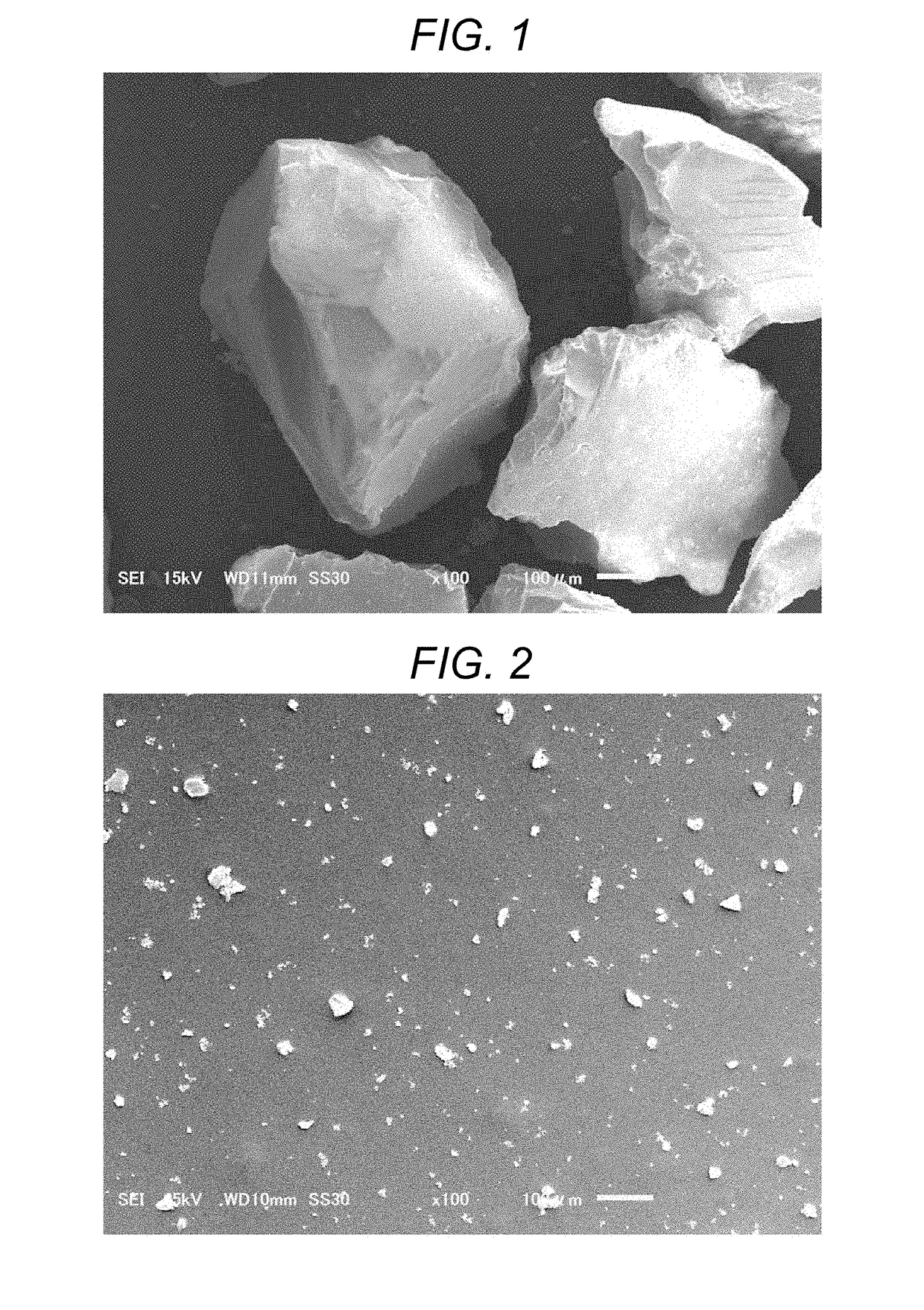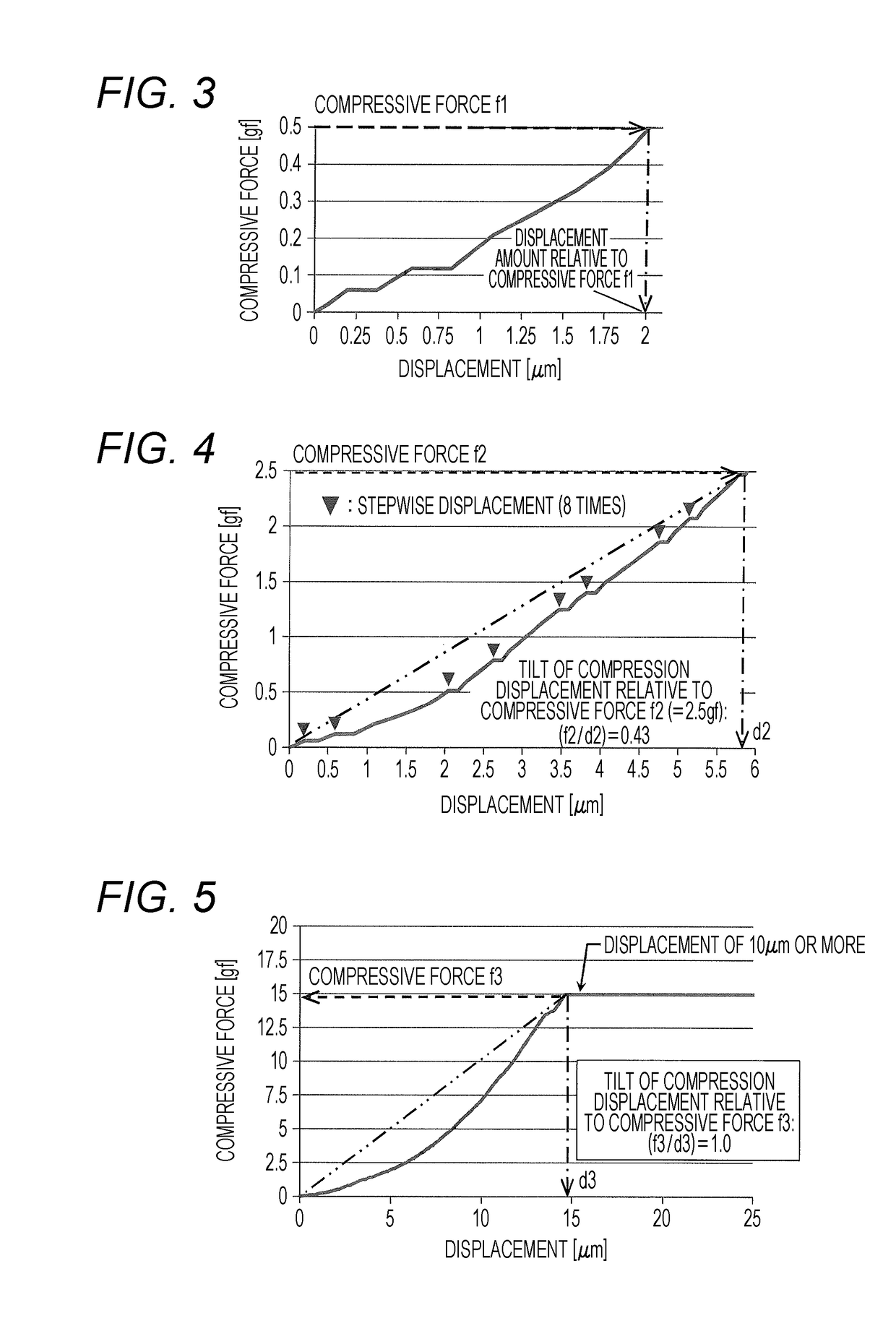Porous silica particle and cleansing cosmetic
a technology of porous silica and cosmetics, which is applied in the direction of silicon oxides, chemistry apparatus and processes, and silicon compounds, can solve the problems of deteriorating the barrier function and achieve the effect of suppressing the moisture retaining function of the stratum corneum, reducing the tingling sensation, and sufficient exfoliation properties
- Summary
- Abstract
- Description
- Claims
- Application Information
AI Technical Summary
Benefits of technology
Problems solved by technology
Method used
Image
Examples
example 1
(Slurry Preparation Step)
[0045]By mixing 20.3 g of a silicate soda (with a silica concentration of 29 wt %) according to JIS3 and 49.1 g of pure water, a silicate soda aqueous solution (with a silica concentration of 8.5 wt %) is obtained. This silicate soda aqueous solution is added by 10.0 g to a sulfuric acid aqueous solution (with a sulfuric acid concentration of 25 wt %) heated to be 40° C., so that slurry A with a pH of 4.0 is prepared. By adding 0.4 g of ammonia water (with an ammonia concentration of 15 wt %) to the slurry A, slurry B is obtained. The slurry B has a pH of 7.0 and a silica concentration of 7.4 wt %. This silica is derived from the silicate soda.
(Dehydrating Step)
[0046]The obtained slurry B is filtered through the quantitative filter paper (No. 2, manufactured by Advantec Toyo Kaisha, Ltd.) using the Buchner funnel (3.2 L, made by SEKIYARIKA Co., Ltd.). After that, the resulting substance is repeatedly cleaned, so that a cake-like substance is obtained.
(Drying...
example 2
[0059]The crushing time for the dried powder was changed to 30 seconds. The sieve was changed to the 50-mesh sieve (the specification based on JIS test). Except this, the same method as that of Example 1 was employed to prepare and evaluate the porous silica particle.
example 3
[0060]In this example, 0.06 g of Blue No. 404 is added to 10.0 g of a sulfuric acid aqueous solution (with a sulfuric acid concentration of 25 wt %) heated to be 40° C. in the slurry preparation step. Except this, the same method as that of Example 1 was employed to prepare and evaluate the porous silica particle.
PUM
| Property | Measurement | Unit |
|---|---|---|
| diameter | aaaaa | aaaaa |
| particle diameter | aaaaa | aaaaa |
| median size | aaaaa | aaaaa |
Abstract
Description
Claims
Application Information
 Login to View More
Login to View More - R&D
- Intellectual Property
- Life Sciences
- Materials
- Tech Scout
- Unparalleled Data Quality
- Higher Quality Content
- 60% Fewer Hallucinations
Browse by: Latest US Patents, China's latest patents, Technical Efficacy Thesaurus, Application Domain, Technology Topic, Popular Technical Reports.
© 2025 PatSnap. All rights reserved.Legal|Privacy policy|Modern Slavery Act Transparency Statement|Sitemap|About US| Contact US: help@patsnap.com


